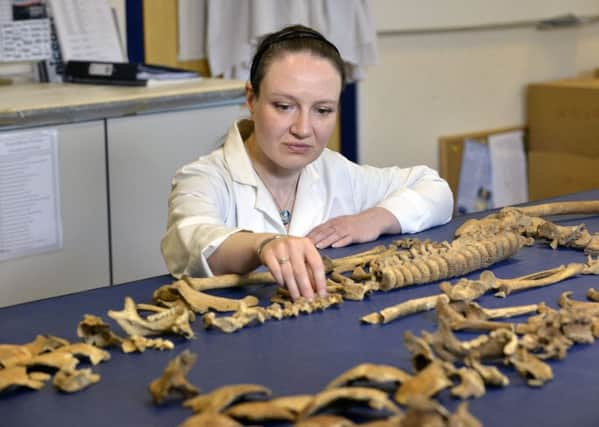Dunbar soldiers' fate discussed at Durham


The main topic of discussion was what to do with the bodies of skeletons of soldiers who were buried in Durham after being captured by Oliver Cromwell’s forces at the Battle of Dunbar in 1650.
Around 4,000 prisoners were marched south to be imprisoned at Durham Cathedral and Castle, with about 1,700 dying of malnutrition, disease and cold .
Advertisement
Hide AdAdvertisement
Hide AdThe audience at the event included the Mayor of Durham, local councillors, representatives from the Battlefields Trust and Historic England as well as current and former staff and students of Durham University.
The five-strong project team from the Department of Archaeology and Archaeological Services Durham University presented their analysis and then took questions from the floor.
They were joined at the event by University Pro-Vice-Chancellor, Professor David Cowling and Canon Rosalind Brown of Durham Cathedral.
In September 2015, after extensive analysis, Durham University announced that the jumbled remains of at least 17 and up to 28 individuals, found in a mass grave behind Durham University’s Palace Green Library, were Scottish Soldiers who fought in the 1650 Battle of Dunbar.
Advertisement
Hide AdAdvertisement
Hide AdThe team gave a commitment to consult on the next steps, taking into consideration the views of a wide range of interested parties and organisations before making any decisions.
The bodies will eventually need to be reburied – a condition of the exhumation licence issued by the Ministry of Justice.
At the public event at Durham Castle there were questions from the audience about the health of the soldiers, including their diet, the damage they were alleged to have inflicted on Durham Cathedral during their imprisonment there and queries about research, commemoration and reburial.
Professor Chris Gerrard, head of the Department of Archaeology and research team lead said: “We would like to thank everybody who came and showed an interest in our work and for participating in what was a lively question and answer session.
Advertisement
Hide AdAdvertisement
Hide Ad“We will now be considering the impressive level of feedback gained over the last few months, including the views shared at our first public event in Dunbar in November, when making our decisions on what should happen next to the soldiers.”
The event followed the project’s first public meeting in Dunbar which had been well attended by representatives from a range of organisations and members of the public. The University expects to make an announcement on next steps later this year.
For information about the Scottish Soldiers Archaeology Project visit: www.durham.ac.uk/scottishsoldiers.